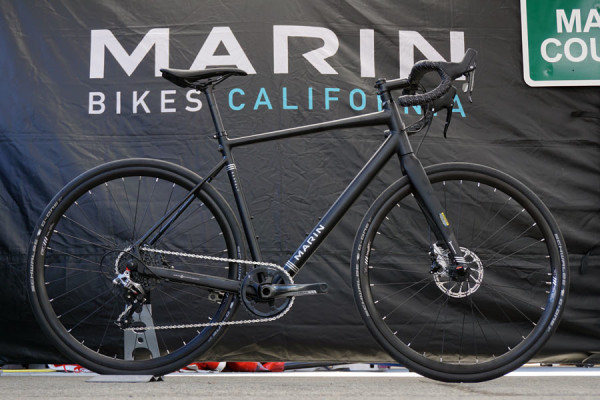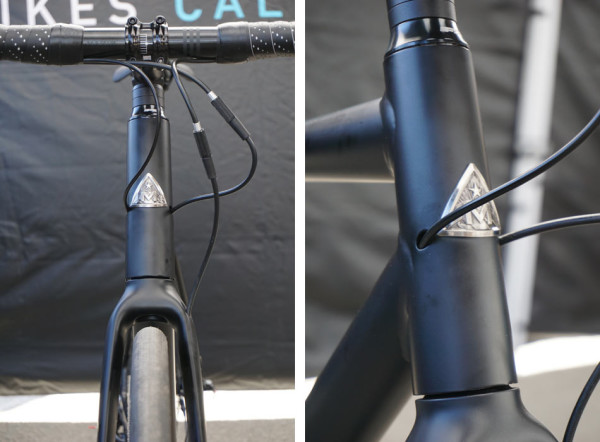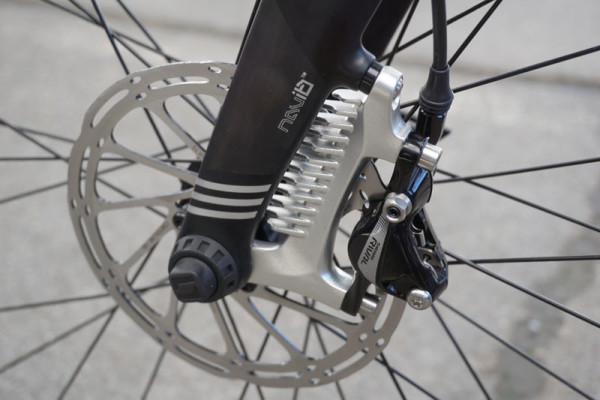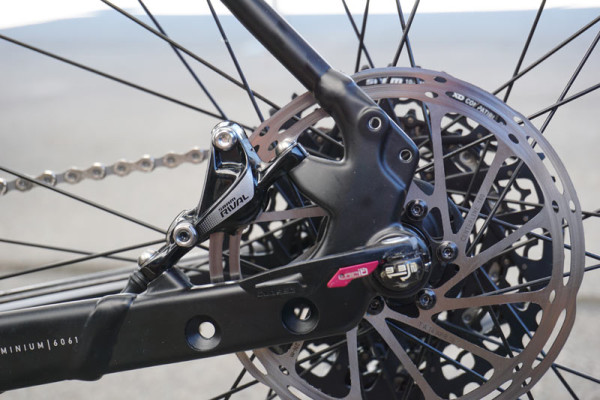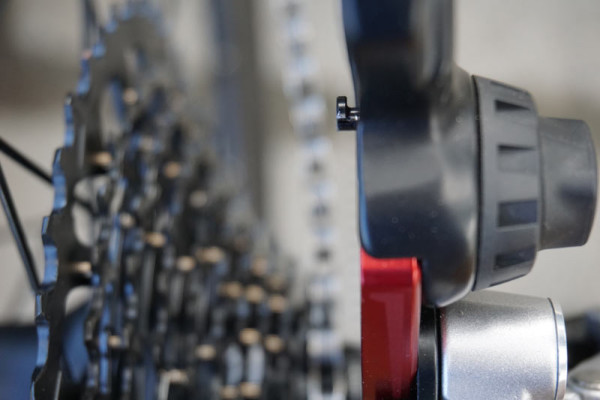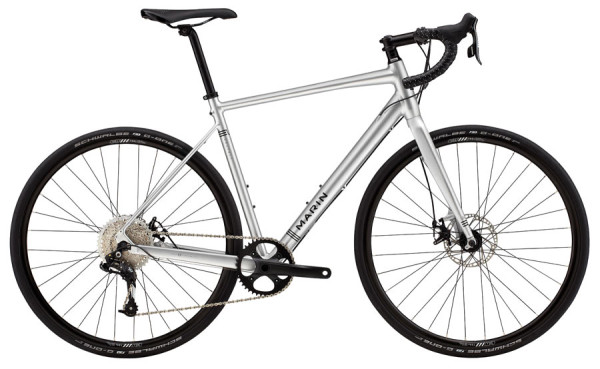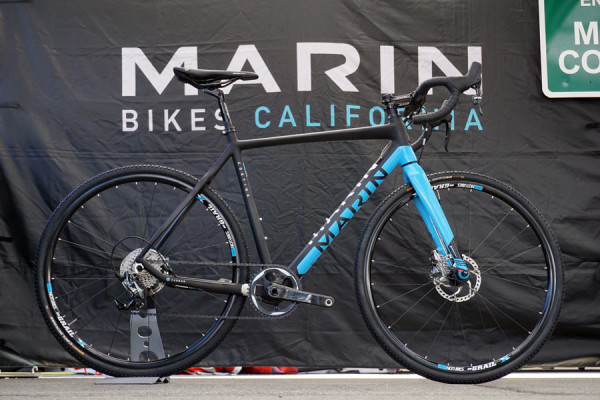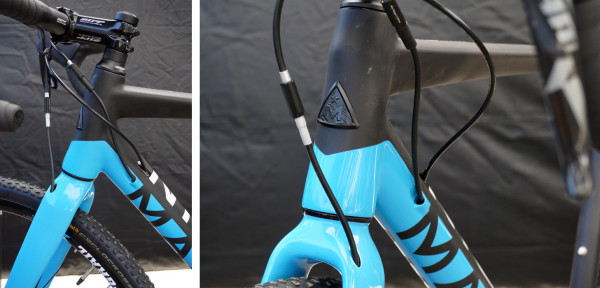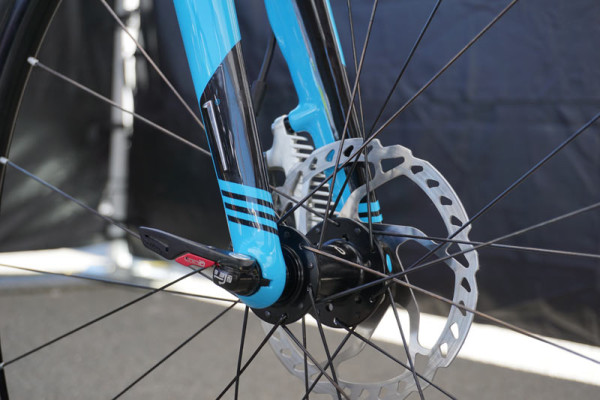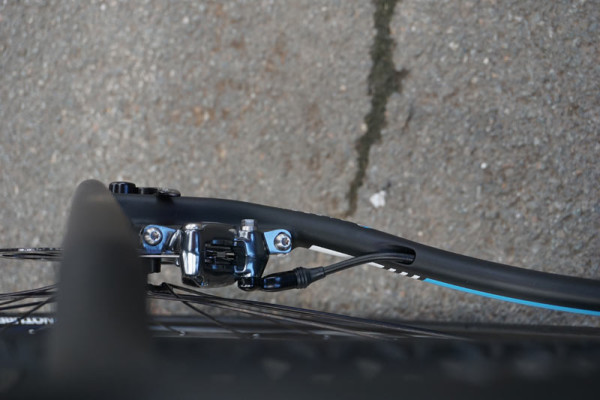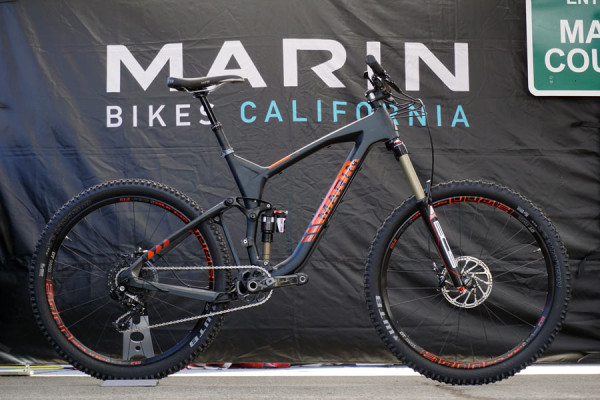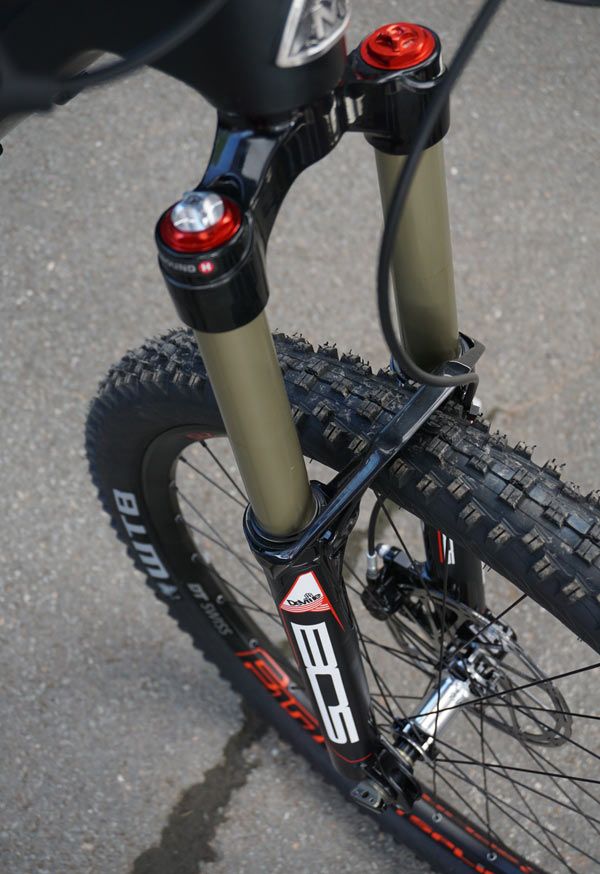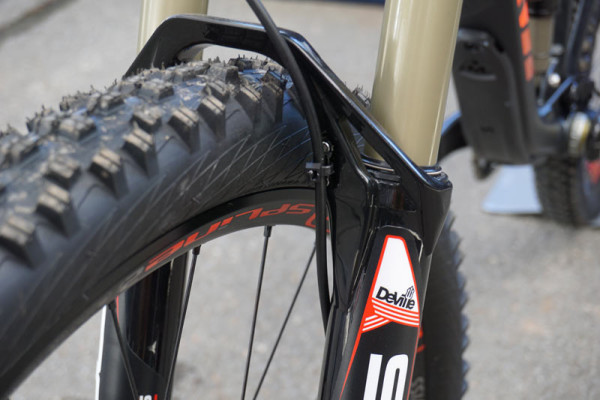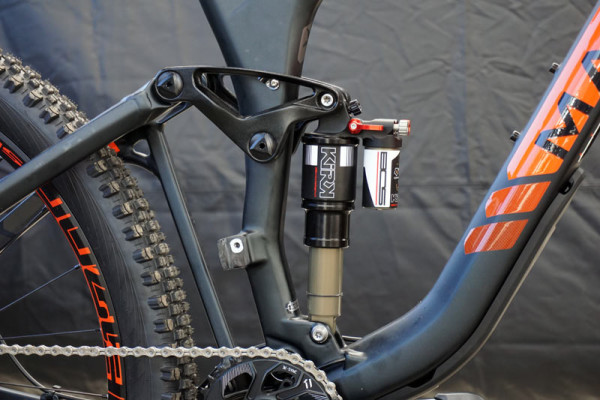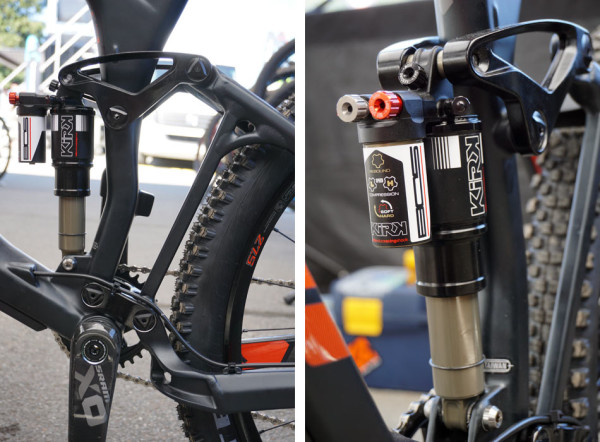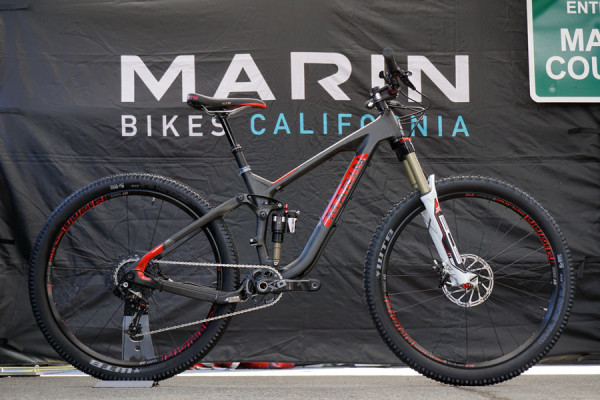Marin unveiled many of their latest bikes at Sea Otter, including the 27.5+ hardtails that helped celebrate the brand’s 30th anniversary.
Now a few more join the lineup, including updated full suspension mountain bikes of all travels and the full carbon Cortina CX. But the mostest newest is the Gestalt “beyond road” bike. The alloy framed ride is named after a bar & grill near their HQ where a lot of cyclists compare Strava stats aprés ride. It has mounts for racks and fenders, endurance geometry and is made for both gravel and light touring.
And yes, this is the one that gets that new NAILD quick release system for front and rear…
The alloy frame is paired with the NAILD Navit carbon legged fork with tapered alloy steerer. Front and rear, there’s
clearance for 700×35 tires.
The Navid fork integrates a rotor-size-specific mount with cooling fins to prevent excess heat from reaching the carbon fork legs.
The locking quick release NAILD thru axle system is rather interesting and worth a closer look. It’s found on the Gestalt 3 shown here, which is Marin’s top version. It’s spec’d with SRAM Rival hydraulic brakes, Rival 1 group, tubeless-ready house-brand road wheels with 19mm internal rim width. Both it and the Gestalt 2 (below) get the new Schwalbe G-One gravel road tires.
A small chain holder sits just inside the seatstay. Retail for the Gestalt 3 is $2,254.99.
There’s also a Gestalt 2 with a slightly tweaked frame that uses standard dropouts. Fork is non-tapered alloy steerer with carbon legs. Spec includes SRAM Apex/X7 1×10 rear drivetrain with non-series narrow/wide crankset, Tektro Spyre 2 mechanical disc brakes, and alloy cockpit. Retail’s $1,209.99.
The Cortina CX Pro cyclocross bike carries over mostly unchanged, but gets new spec with a Zipp Service Course cockpit and new Stan’s NoTubes Grail wheels.
That “new” word in front of the Stan’s wheels is important. We’ve been hearing rumors of an updated design that allows for higher pressure use, and Marin’s 2016 catalog specifically calls this out. If you’ve ever had to inflate a tire higher than 42psi on the original Grails in order to get them to seat or just handle a heavier rider, you know why this is important – tires blow off the rims above 42psi (I’ve had it happen and spray sealant all over my office). This new design opens the wheels up to gravel road bike use, and we’re hoping to have official details on the wheels soon.
The frame is tube-to-tube carbon construction with a full carbon fork that’s…
…also from NAILD. That means it gets their clever quick release thru axle system, but only on the front for this bike.
The rear sticks with quick release for now.
Rest of the spec is SRAM Force 1 cranks and derailleur with a racier XG1190 11-32 cassette. Retail is $4,399.
For 2016, Marin adds BOS suspension to their full suspension lineup, which remains split between two different rear layouts. The Attack Trail is the longest travel bike with 150mm rear mated to 160mm forks. It uses their Quad Link 3 platform, which bounces a unified rear triangle on upper and lower linkages.
For 2016, the Attack Trail changes to an alloy rear triangle on all models except the Pro, which keeps carbon. They found that the riders on this bike tend to be very aggressive, so they crash hard, and an alloy rear end is able to take more of a beating. Should only be slightly heavier.
They switched to DT Swiss wheels on all full suspension platforms on higher end models. They had good feedback on those wheels from German test magazines compared to other wheels they had been using, and they’re lighter.
The WTB Trailboss 27.5 x 2.4 tires don’t leave a lot of extra room in the fork.
Global spec on the Pro and 9 models for Attack Trail, Rift Zone and Mount Vision includes BOS suspension all around (except Rift Zone keeps a Fox shock on the rear). However, the German market gets a Rockshox Pike, which was a request from the dealers there because they can service those products themselves and aren’t as experienced with BOS.
Which segues nicely into a quick word on BOS suspension: I’ve ridden BOS front and rear on two different enduro bikes now, and they’re different. Speaking with others that have ridden them, too, the general consensus is that the suspension works best at speed. It also takes some time to dial it in, which is done via myriad external compression and rebound controls. So, while the name carries a premium, if you get a BOS equipped bike and just hop on it hoping for magic, you may be disappointed. Check out our Suspension Setup Guide and spend some time with it to take full advantage. One thing I noticed on both bikes was that even with rebound wide open, the bikes didn’t want to “pop” up and over things, instead having a more controlled rebound rate. Yet they didn’t get bogged down in the travel over repetitive hits. Take into consideration my test rides were over just a couple of days on different systems and bikes without the proper amount of fiddling time, but those were my first impressions.
The Attack Trail 9 Carbon comes spec’d with the BOS Deville 3-way adjust fork…
…and Kirk 1-way adjust rear shock with piggy back reservoir. UPDATE: The 1-way means it’ll get just a rebound knob and on-or-off climb platform switch, versus the fork’s 3-way compression settings (think CTD), but it’s a bit misleading. The model shown here is what’ll be on the Pro build and adds external high and low speed compression adjustments, which gives you a lot of control over how the shock performs.
The Attack Trail 9 Carbon gets an X01 build, Guide brakes and DT Swiss E1700 wheels. Both the Attack Trail and Mount Vision models get a Gamut stem and Deity bar on high end models, a rather unique spec to complement the BOS suspension. Retail is $6,599.
Below it, the Attack Trail 8 ($3,959) gets an alloy front triangle but upgrades from last year’s spec to an X1 1×11 group with Sunrace 11-42 cassette, KS LEV dropper post, SLX brakes, Formula hubs and new custom 27mm internal width Maddux alloy rims.
The 27.5″ Mount Vision steps it down slightly with 140mm rear wheel travel and matching length forks, but switches to their IsoTrac design that uses an open rear triangle with no rear pivot. It relies on seatstay flex to work, the kinematics of which are worked into the overall performance of the bi
